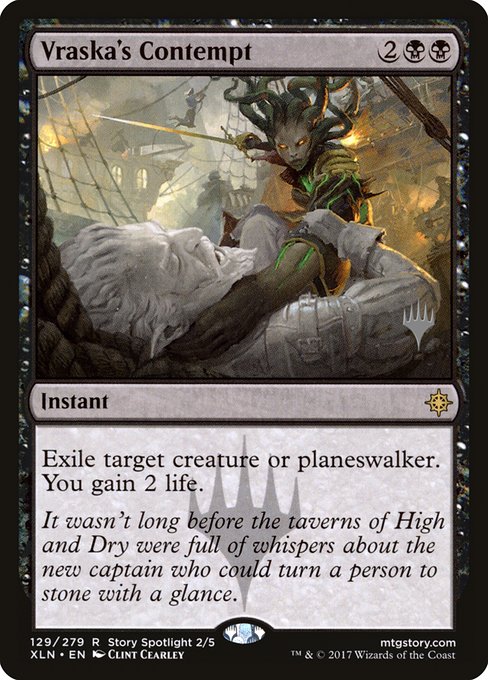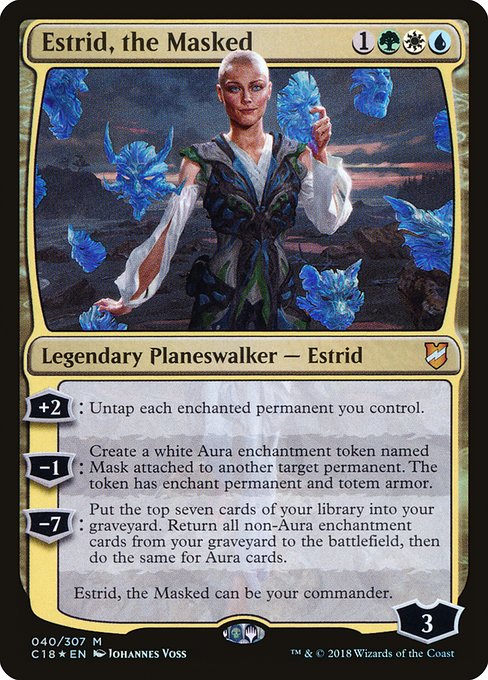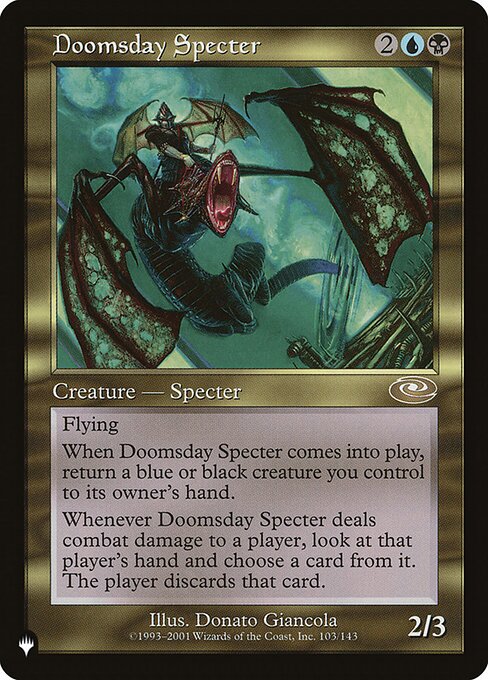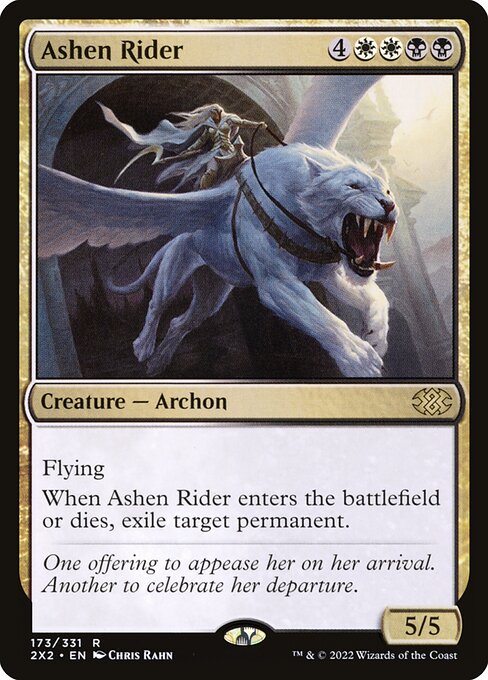
Abyssal Harvester

Guide Sections
Strategy Guide
Last updated 2025-07-06Quick Summary
Abyssal Harvester is a 3/2 Demon Warlock with a potent activated ability. Its cost is {1}{B}{B}, making it reasonably affordable for a creature with this effect. The ability, activated by tapping the Harvester ({T}), allows you to exile a creature card from a graveyard that was put there this turn. This targeting restriction is crucial; you cannot use it to exile creatures that were put into the graveyard earlier in the game. Once you exile the target card, you create a token that is a copy of that creature card, with the addition of Nightmare to its creature types. This means the token inherits all abilities, power, and toughness of the original creature. Finally, after creating the token, you exile all other Nightmare tokens you control. This last clause ensures you only have one Nightmare token at a time created by this ability, preventing overwhelming token floods.
This ability interacts significantly with graveyard strategies. It can be used to temporarily 'steal' a powerful creature from your opponent, like Grave Titan or Tarmogoyf, and then turn it against them, though its low toughness does leave it vulnerable to removal. Note that if the exiled card has any abilities that trigger upon being exiled, those will resolve before the token is created.
An interesting edge case arises if the target creature has an ability that modifies its own types, or if it’s already a Nightmare. The Nightmare type is added to the copy, overriding any preexisting type manipulation or the fact that it might already be a Nightmare. Also, if you have no other Nightmare tokens, the final clause of its ability does nothing.
Another significant interaction occurs with cards that manipulate graveyards. Unearth or Rise from the Grave can return creatures to the battlefield; however, Abyssal Harvester can only target creatures put into the graveyard this turn. Therefore, using these cards earlier in the turn, and then activating the Harvester, will allow you to use the Harvester on the resurrected creature if the cards are played this way. Cards that prevent creatures from entering the graveyard, such as Scavenging Ooze, would naturally hinder the Harvester's effectiveness.
Abyssal Harvester excels in strategies that leverage graveyard recursion and powerful creature effects. Its strategic value lies in its ability to selectively steal and copy creatures from opponents' graveyards, creating a powerful, albeit temporary, addition to your own board. The "exile all other Nightmare tokens" clause is crucial, preventing the opponent from benefiting from multiple copies and ensuring your board presence remains focused.
Decks focusing on graveyard strategies, such as Reanimate decks or strategies centered around graveyard recursion, will find Abyssal Harvester incredibly useful. Similarly, decks that benefit from powerful, temporary creatures or want to disrupt opponents' graveyard strategies will find it a valuable asset. This includes archetypes using cards like Sheoldred, the Apocalypse or The Meathook Massacre which benefit from opponent's graveyard interactions.
Abyssal Harvester fills several roles. Primarily, it acts as a disruptive element, denying opponents the benefits of their creature's graveyard recursion. It also functions as a powerful tempo swing, potentially generating a significant board advantage by stealing and copying a key threat. Finally, it can act as a finisher, particularly if the stolen creature has high power or relevant abilities. The transient nature of the Nightmare tokens means it's best played in a deck with other efficient threats that can continue to press the offensive even after the tokens are exiled. The cost of {1}{B}{B} suggests it will most often fit within midrange or control strategies, rather than aggressive ones.
The Abyssal Harvester's strength lies in its ability to create powerful, albeit temporary, copies of creatures exiled from graveyards. Successful deckbuilding revolves around maximizing the value of this effect, focusing on strategies that generate a steady stream of creature cards entering graveyards this turn, and leveraging the Nightmare subtype for additional synergies.
Building around the Harvester necessitates a focus on creature-heavy strategies. Cards that readily fill graveyards this turn, such as Bloodghast, Goblin Bombardment, or Dread Return are excellent inclusions. The latter can even bring back a powerful creature for immediate reanimation and copying by the Harvester. Sacrifice outlets, such as Altar of Dementia and Phyrexian Altar, can also synergize well, providing a consistent stream of creatures to feed the Harvester while generating mana.
The temporary nature of the copied Nightmares means maximizing their impact before they are exiled is crucial. Cards that provide immediate value from creatures entering the battlefield, like Overrun, Triumph of the Hordes, or Grave Pact, can greatly amplify the impact of the Harvester's ability. Furthermore, the copied Nightmares benefit from any buffs or effects that target Nightmares specifically. While this is a less common subtype, finding cards that interact with Nightmares could drastically enhance the strategy.
Another crucial aspect is mitigating the downside of exiling all other Nightmare tokens. While this clears the board of weaker copies, it also prevents stacking multiple powerful creatures. This suggests a playstyle focused on quality over quantity, aiming for potent single targets such as large creatures or creatures with impactful abilities for the Harvester to copy each turn. Cards that allow you to repeatedly exile and re-copy the same creature, although potentially requiring some sacrifice cost, could be explored to overcome this limitation. The deck should focus on controlling the board to allow the Harvester's powerful effect to shine without being interrupted.
Abyssal Harvester's viability is heavily format-dependent, shining brightest in formats with readily available graveyard strategies and a high density of powerful creatures. Its utility stems from its ability to temporarily resurrect strong creatures from the graveyard, creating a powerful temporary copy, while simultaneously controlling the number of Nightmare tokens on the battlefield.
In Standard, Abyssal Harvester's success hinges on the metagame. If many decks rely on powerful graveyard synergies such as Kroxa, Titan of Death's Hunger or The Wandering Emperor, the Harvester can be a potent answer, allowing for a temporary, albeit powerful, counterplay. However, the Standard environment is constantly shifting, making its long-term viability uncertain. The 3/2 body is vulnerable to many common removal spells, limiting its longevity.
Historic presents a more promising landscape. With a deeper card pool, more graveyard-focused strategies exist. Decks utilizing Lurrus of the Dream-Den or Reanimate effects could find significant synergy with the Harvester, allowing it to repeatedly bring back powerful creatures. The potential to repeatedly create powerful, albeit temporary, threats makes it a more compelling inclusion in Historic.
Commander offers another compelling home for Abyssal Harvester. Its ability to create powerful temporary copies of creatures, even those with high mana values or unique abilities, is highly valuable in a format where powerful one-of cards are plentiful. It can be a game-changer against strategies that rely on graveyard recursion like Grim Tutor or Yawgmoth, Thrashing Titan. However, the 3/2 statline can be a significant downside against many Commander decks.
Overall, Abyssal Harvester's strength lies in its ability to disrupt and temporarily leverage opponent's graveyard strategies, generating significant tempo swings. Its effectiveness is however greatly determined by the specific metagame and availability of strong creatures in opponent's graveyards.
Abyssal Harvester shines in scenarios where your opponent is utilizing graveyard strategies or has powerful creatures they've recently lost. Imagine a board state where your opponent just cast Sheoldred, the Apocalypse, sacrificing several creatures to its ability. You control Abyssal Harvester and have 3 mana available. Tapping the Harvester allows you to exile Sheoldred, the Apocalypse from their graveyard, creating a Nightmare copy that then remains the only Nightmare creature on the board. This denies your opponent immediate access to their powerful card while still providing you with a significant threat on the board. You can then use this copied Sheoldred to your own advantage, sacrificing other creatures you have.
Another powerful scenario involves countering a recurring threat. If your opponent repeatedly casts and sacrifices a creature like Bloodghast, you can use Abyssal Harvester turn after turn to exile and copy it. Each time, the new Nightmare token replaces the previous one, effectively neutralizing their repeated value while continuously gaining a strong creature for yourself. This scenario is especially powerful in a longer game where the card advantage from repeatedly generating a powerful creature will be felt.
A third impactful scenario showcases Abyssal Harvester’s synergy with self-mill strategies. Suppose you've milled several strong creatures into your graveyard using Liliana's Caress or similar card. Even if your opponent does not have creatures in their graveyard, you can still take advantage of your own powerful milled cards. On your turn, play Abyssal Harvester and mill a large creature from your deck. Then, activate Abyssal Harvester's ability to exile and copy the large creature, gaining a strong creature while still maintaining card advantage. This plays to the card's strengths of generating value from the graveyard.
Abyssal Harvester, a rare black creature from the Fate Reforged set (fdn), quickly carved a niche for itself in competitive Magic: The Gathering. Its unique ability to exile a creature from a graveyard and create a Nightmare token copy of it, while simultaneously exiling other Nightmare tokens, offered both graveyard hate and powerful tempo swings. The card's restrictive "put there this turn" clause prevented it from completely dominating graveyard strategies, but its ability to steal and replay key threats like Collected Company targets or Gurmag Angler proved extremely valuable. Its relatively low mana cost and solid 3/2 body also ensured it could hold its own in combat while disrupting opponents.
The initial release saw Abyssal Harvester finding a home in various black-based midrange and control decks. Its ability to reanimate powerful creatures while keeping the opponent’s graveyard under control made it a desirable inclusion. Subsequent reprints, though limited, haven't significantly altered its impact. Its absence from more recent sets speaks to its already established place in the game's history, a testament to its effectiveness in specific metas rather than universal dominance across all formats. While not a cornerstone card like Liliana of the Veil or Thoughtseize, Abyssal Harvester's design proved both clever and effective, leaving a distinct mark on the game’s black creature archetype. The need to manage the “Nightmare token” aspect of its effect adds a layer of tactical gameplay that prevents it from being trivially powerful.
Abyssal Harvester's flavor text perfectly captures the chaotic and destructive nature of a demon warlock delving into the abyss. The art depicts a menacing figure, appropriately demonic and wielding dark power, reinforcing this feeling. The design effectively leverages the graveyard, a common theme in black, and the mechanic of creating copies, though with the Nightmare subtype twist adding a unique element. This twist creates a tension between building up a powerful army of Nightmare tokens and the inherent limitation of controlling only one at a time. This elegantly plays into the chaotic, unpredictable nature of the Abyss itself.
The card's mechanics synergize well with other graveyard-focused strategies. Rise of the Dark Realms benefits greatly from the ability to create powerful Nightmare tokens. Similarly, Necropotence and other cards that fill up the graveyard fuel Abyssal Harvester's ability. Conversely, cards that generate many tokens, while potentially providing powerful fodder, might be less effective as Abyssal Harvester actively removes most of your previous Nightmare tokens. This creates an interesting strategic choice: focusing on creating a single, overwhelming Nightmare or generating many less powerful tokens that are quickly sacrificed for a bigger one.
The design’s inclusion in the fdn set would depend on the overall theme, but given the focus on demons and graveyard interaction in many black-aligned sets, Abyssal Harvester would likely be a strong addition. Its rarity is appropriate, given its powerful effect and conditional nature, providing a compelling but not overpowered option for black midrange or control decks. The "exile all other Nightmare tokens" clause is a clever inclusion to manage potential runaway scenarios, balancing its raw power with strategic limitations.
The Abyssal Harvester, costing {1}{B}{B}, sits in a somewhat awkward spot regarding budget. While a rare card, its mana cost isn't excessively high, making it playable in many black-based decks. However, its power level isn't overwhelmingly high compared to other options at similar mana costs. This makes it a flexible but not necessarily budget-friendly choice. Many players aiming for a lower budget would likely prioritize including more readily available commons and uncommons.
Cheaper alternatives depend heavily on the desired strategy. If the goal is graveyard recursion and powerful creature generation, cards like Bloodghast offer a recursive element, albeit without the token-copying ability, at a significantly lower cost. For a pure creature-token strategy, a cheaper, albeit less synergistic, option could be found in cards focused on creating creature tokens en masse. For example, Goblin Matron could fetch a suitable creature, while cards like Crypt Ghast offer graveyard manipulation at a lower mana cost. Ultimately, whether Abyssal Harvester is "budget-friendly" depends on the overall deck budget and the strategic role intended for this card.
The Abyssal Harvester offers surprisingly versatile utility beyond straightforward creature recursion. Its ability to exile all other Nightmare tokens controlled before creating a new one makes it a potent engine for strategic graveyard manipulation and board control. This isn't just about grabbing a creature; it's about carefully controlling which creature reappears.
For example, consider using it to reacquire a key creature like Collected Company or Tireless Tracker that your opponent exiled earlier in the turn using a card like Rest in Peace. By doing so, you remove the threat of their graveyard hate while simultaneously deploying a powerful effect. The temporary nature of the Nightmare tokens means that the effect doesn't linger, avoiding potential negative interactions with cards that trigger on creature death or permanents leaving the battlefield.
Another sophisticated use involves manipulating the battlefield state in a temporary way. Suppose your opponent has a creature with a crucial triggered ability such as Champion of Lambholt that enters the battlefield with a triggered ability. By using the Harvester to copy it, you then utilize the temporary copy's effect before it's immediately exiled, avoiding the drawbacks of letting the initial creature remain on the battlefield.
This unique interaction with Nightmare tokens can also be leveraged in conjunction with cards that care about creature types or entering the battlefield. For example, a deck leveraging the synergy between Nightmare and other creature types could use this effect to repeatedly trigger effects tied to specific creature types. The self-exiling mechanic is important for controlling the board state in this scenario, stopping an uncontrolled swarm of powerful creatures.
Finally, the Harvester itself is a relatively inexpensive creature, making it a viable addition even in aggressive strategies. Its 3/2 body is respectable and, in combination with its ability, it can contribute early pressure and provide a late-game engine. The flexibility of this card is largely dependent on its interactions with other graveyard-centric or creature-type focused strategies, highlighting its advanced potential.
Common Mistakes with Abyssal Harvester often revolve around misjudging its tempo and its interaction with other cards. A frequent error is using its ability reactively, rather than proactively. Waiting until an opponent casts a powerful creature, only to then exile it with Abyssal Harvester and create a copy, allows them to effectively still benefit from the creature's effects (like a triggered ability that already resolved). A better strategy is to anticipate your opponent's plays and use Abyssal Harvester preemptively to deny them the value of their creature altogether.
Another mistake stems from neglecting the "exile all other Nightmare tokens" clause. Players sometimes forget this crucial part of the effect, leading to unnecessary token proliferation. It's important to remember that this is a replacement effect – any Nightmare tokens you control will be exiled before the new Nightmare token enters the battlefield. This means stacking multiple Abyssal Harvester effects to create multiple copies of the same creature won't work as intended; only the final copy will remain.
Finally, players might overlook Abyssal Harvester's vulnerability. Being a 3/2 creature makes it relatively fragile and susceptible to removal. Overcommitting to using it as a primary source of disruption before ensuring its survival can be a significant misplay, especially against decks with efficient removal such as Lightning Bolt or Doom Blade. Effective play often involves assessing the board state and considering the likelihood of Abyssal Harvester's survival before activating its ability.
Abyssal Harvester offers a powerful but conditional tempo swing. Its value hinges on the presence of recently-exiled creatures in graveyards, making it a strong addition to strategies focused on graveyard interaction and creature recursion. The ability to create a powerful copy of an opponent's creature as a Nightmare token—while simultaneously removing any other Nightmare tokens—provides a burst of immediate power, potentially overwhelming opponents unprepared for this aggressive maneuver. However, its effectiveness is heavily reliant on the opponent's graveyard state and can be underwhelming if that state is empty or lacks high-value targets. Therefore, Abyssal Harvester shines in decks that can manipulate the graveyard, such as those utilizing Reanimate effects, Rise of the Darklords, or cards that proactively fill the graveyard like Liliana's Caress. Playing it effectively requires careful timing; wait until an opponent has a desirable creature in their graveyard to maximize its impact. Otherwise, it's a 3/2 creature for four mana, which is less impressive.




